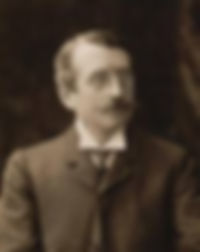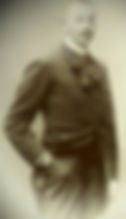- samuelhmagill
- Nov 1
- 3 min read
I am very excited to report that I will be presenting two programs this season of the music of the pupils of Franck. The first one will be on February 8th, 2026, at Wake Forest University, with pianist Mathilde Handelsman. At 3:00 PM
The program is one that I find immensely appealing:
1. Sonata in F major (1904) by Mélanie Bonis (1858-1937)
2. Sonata in a minor (1919) by Auguste Chapuis (1858-1933)
3. Sonata in d minor (1930) by Pierre de Bréville (1861-1949)
It seems that, because Bonis had been so utterly forgotten, she wasn't included in any of the books on Franck which I read, but her official biography on mel-bonis.com is quite specific on the subject of her early life and of her admittance to the Paris Conservatoire, as well as the account of her acceptance as a pupil by César Franck himself. What I don't understand is why Vincent d'Indy, in his chapter titled "The Artistic Family" in his biography of Franck, would have seen fit to discuss Augusta Holmès but not Ms. Bonis! My own theory on this subject is that the severe Monsieur d'Indy was most probably scandalized by the love affair which Bonis had been conducting while still a student at the Conservatoire. This caused the unfortunate young woman to be unceremoniously withdrawn from the school by her very Victorian family, and married off to a wealthy man 25 years her senior! That she continued to compose seriously for the rest of her life shows that she was made of sterner stuff than her family realized.
Auguste Chapuis is not well-known even in France, but he was, like most of his colleagues at the Conservatoire, an organist. He taught organ at the Paris Conservatoire from 1894 until 1923. He was a fairly successful opera composer, and his major work, "Enguerrande," was produced at the Opéra Comique in 1892.

I have written about Pierre de Bréville in Chapter 4 already, so I won't say any more about him here.
The 2nd program will be given at Meredith College in Raleigh, NC. I have a tentative date of March 8th at 7:00 PM with pianist Bridget O'Leary. Each of the composers was a major organist. Thus, we have:
1. Sonata in C Major (1898) by Charles Tournemire (1870-1939) World Premiere
2. Sonata in f# minor, op. 46 in One Movement by Gabriel Pierné (1863-1937)
3. Sonata in b minor, op 27 by Louis Vierne (1870-1937)
Someday, someone will discover just why so many famous musicians died in 1937! Ravel, Gershwin, Szymanowski, Foote, Roussel, Widor, Vierne, and Pierné!
What's especially exciting about this program is the fact that the Tournemire Sonata was written 127 years ago, yet is most likely being given its very first performance! I obtained it from the French National Library in manuscript form, and I must thank Dr. Kurt Daniels of High Point, NC, for his tremendous labor in engraving the work and producing the very first edition! Oddly, the two middle movements were published as "Two Pieces, op. 5," but the outer two were not.
The Pierné Sonata from 1919 is a masterpiece of 20th-century chamber music and needs no introduction, at least not before my chapter about him, coming soon.
The Vierne Sonata has become rather popular in the last 20 years. I am so amazed that this blind composer was able to write so much great music using Braille! Not to mention all the Organ Symphonies. I will write about him in some later chapter since he was one of the last students of Franck.






